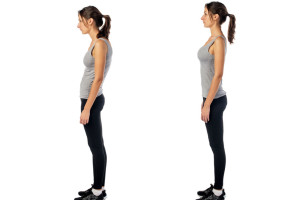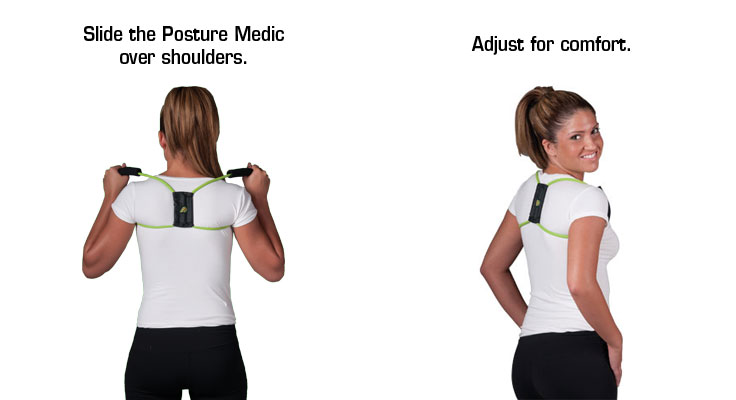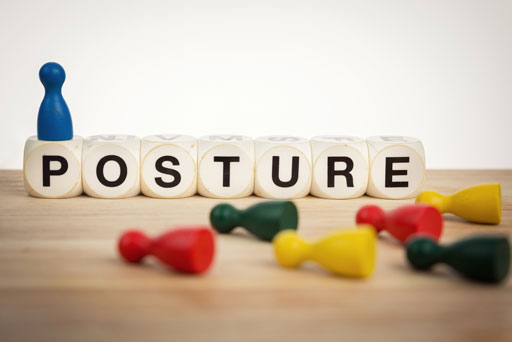 PostureMonth.org has kicked off Posture Month to bring together doctors, therapists and other health care professionals from all over the world to help address the global epidemic that is being caused by modern technology. PostureMonth.org seeks to help educate and empower both health and wellness professionals and patients in the impacts of this new health epidemic.
PostureMonth.org has kicked off Posture Month to bring together doctors, therapists and other health care professionals from all over the world to help address the global epidemic that is being caused by modern technology. PostureMonth.org seeks to help educate and empower both health and wellness professionals and patients in the impacts of this new health epidemic.
In recognition of the epidemic and the work of PostureMonth.org, Broadway AT Yew Chiropractic & Massage has put together some helpful information and tips about posture awareness.
At Broadway AT Yew Chiropractic & Massage, we know that posture isn’t just about standing up straight. It’s about keeping the entire body healthy. Poor posture has an obvious consequence that we have all experienced at one time or another – pain. But a lack of good posture can have a negative impact on so many aspects of our lives that we may not realize are directly related. Here are some of the activities and conditions that can suffer if we have poor posture:
- Aging
- Anxiety
- Appearance
- Arthritis
- Attitude
- Balance
- Blood pressure
- Breathing
- Carpal tunnel syndrome
- Confidence
- Energy level
- Risk of fall
- Flexibility
- Headaches
- Joint and neck pain
- Sciatica
- Scoliosis
- Shoulder pain
- Sleep
- Sports
- Stress
Wow, that’s a big list, and it doesn’t capture all of the consequences of poor posture.
So how can we correct our posture and prevent such maladies from occurring? Let’s take a look at the ACE Model – a set of simple actions that you as a patient can take to improve your posture.
ACE – Awareness, Control, Environment
While Chiropractors and RMTs can treat many of the symptoms of poor posture, it’s up to each of us to correct our postural habits as a preventative measure. ACE is a simple set of actions that each person can take to help reduce the risk of poor posture and the side effects that result from it.
Awareness
Did you know?
- 6 million people have major back pain
- 1 out of 4 adults of suffered such major back pain within the past three months
- College students spend an average of 8-10 hours each day using a cellphone to make calls or text
- Those who spend more than 12 hours each day sitting at a desk are at far greater risk for diabetes and heart disease – as the saying goes, “sitting is the new smoking”
Being aware of your posture is one of the best ways to prevent posture-related side effects. Throughout your day, do a quick ‘posture check’. Are you slouching or slumping? Each time you notice that you are practicing poor posture, take a few minutes to correct your position. Sit up straight, ensure your shoulders are in the correct position, that your head is level with whatever device you are working at (such as a computer) and that your wrists are in a comfortable position, with shoulders back.
Control
Did you know?
- It takes 640 muscles and 206 bones to stand upright in a properly balanced position
- 1 in 3 adults over 65 suffer a balance-related fall each year
Keeping your body limber is a key factor in improving your posture. Performing regular stretching and balancing exercises will help keep your body in tip top shape so that all of your muscles can be used properly.
Environment
Did you know?
- Most people spend a mere 4 hours each day actually being active
- Improper ergonomics contribute to most ‘in the workplace’ injuries in people who sit at a desk all day – it may seem odd that you can injure yourself simply sitting at a desk, but it’s true!
Ensuring that your environment is conducive to good posture is extremely important. Whether you are sitting at a desk at work or school all day, or practicing sports, ergonomics are key to ensuring excellent posture.
How you sleep is also vital to your overall health and posture. Choose a mattress and pillow that support your body properly – after all, if you’re like most people, you spend at least seven hours each night sleeping in bed!
 How We Can Help
How We Can Help
Now that you know some of the simple changes you can make by following the ACE Model, let’s talk about how we as health care professionals and Vancouver chiropractors can help you to achieve optimum posture.
Teaching Wellness in the Workplace
As part of your health care team, we can provide you with information about proper ergonomics. Based on your posture assessment, we’ll recommend the right types of chairs and supports you need to use while at work to help correct and maintain good posture.
Teaching Proper Bending and Lifting Techniques
Knowing the proper way to bend and lift is key to back health. If you work in a position where there is a lot of heavy lifting required, let us teach you the proper way to bend and lift, and if necessary, recommend special types of back supports and/or braces that will help support your body during work.
Prescribing Posture Exercises
As noted, keeping your body in prime condition is an important part of good posture. By prescribing a simple set of stretches and other exercises that you can practice each day, you will be keeping your body in top physical form so that you are able to perform your work and life activities with good posture.
Summary
Our posture is an important factor in our everyday lives. Good posture can reduce pain and the risk of injury we face when we aren’t aware of how our bodies are positioned. Being aware is the first step to correcting and/or maintaining good posture, and that’s something everyone can benefit from.
Just In!
Looking to improve your posture? This can help! Recently, we’ve started selling the Posture Medic at our Vancouver chiropractic clinic. The Posture Medic is an incredibly effective device for correcting poor posture and the device also doubles as a strength and stretching instrument. For more information about the Posture Medic and how it can vastly improve your posture, click here.
The Posture Medic is available at our clinic for only $45!




 How We Can Help
How We Can Help